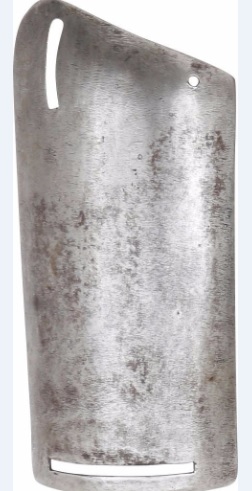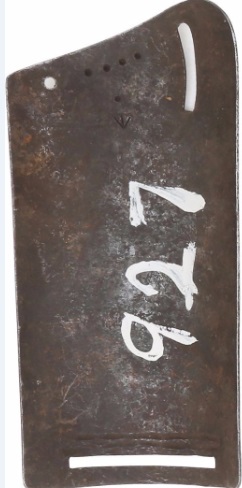That being the case, I am surprised to see some pieces described as "splint armour" of lower arm, for sale from a well-known dealer in the USA, which the dealer is dating to c1480-1510. He is a dealer who knows his stuff, so I don't doubt the dating or attribution, so it appears my knowledge is badly wrong.
Measurements: 7" x 3 1/4" Picture shows interior and exterior.
How late did splint armour of this kind persist in use in Western Europe?
Thanks!

